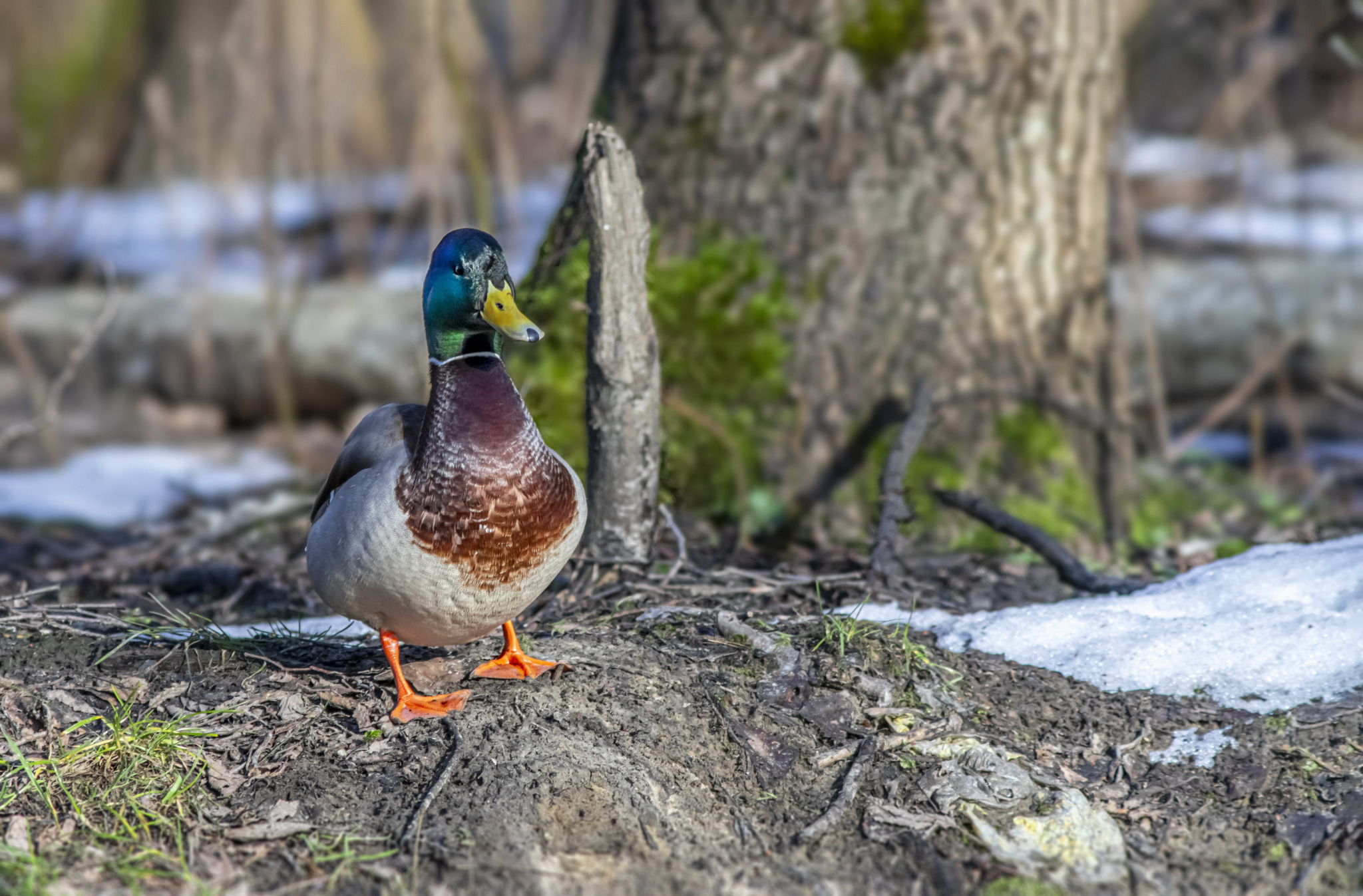Wild Mallard (Anas platyrhynchos)
The wild mallard is one of the most widespread and recognizable wild ducks in the world. It is the ancestor of most domestic duck breeds and is found across Europe, Asia, North America, and parts of North Africa.
🦆 Description
- Male (drake): Glossy green head, white neck ring, chestnut-brown chest, and gray body.
- Female (hen): Mottled brown plumage for camouflage, with an orange bill marked with black.
- Both sexes have a blue-purple speculum (wing patch) bordered by white.
🌍 Habitat & Range
Wild mallards inhabit lakes, ponds, rivers, marshes, and coastal wetlands. They adapt well to urban environments, often seen in city parks and reservoirs.
🍃 Behavior & Diet
Mallards are omnivorous dabbling ducks, feeding on aquatic plants, seeds, insects, snails, and small crustaceans. They often tip forward in the water rather than diving.
🐣 Breeding
- Nest is built on the ground, often hidden among vegetation near water.
- Female lays 8–13 eggs, incubating them for about 4 weeks.
- Ducklings are precocial, leaving the nest within hours of hatching.
🕊️ Interesting Facts
- Wild mallards are highly migratory, wintering in milder regions.
- They are key ancestors of most domestic duck breeds.
- Known for “quacking” calls, especially the females.
In a serene pond nestled within a verdant landscape, the majestic Mallard reigns supreme, its iridescent plumage glistening in the gentle sunlight. With its characteristic emerald head and vibrant chestnut-brown body, the Mallard stands as an emblem of natural beauty and grace.
The male Mallard, known as a drake, proudly displays his striking colors as he glides effortlessly across the tranquil waters. His iridescent green head shimmers in the sunlight, while a thin white ring encircles his neck, contrasting elegantly with the rich chestnut of his breast. With each graceful movement, his long, slender body seems to cut through the water with ease, leaving a trail of ripples in his wake.
Beside him, the female Mallard, known as a hen, is adorned in more muted tones of brown and tan, camouflaging her against the surrounding reeds and grasses. Despite her more understated appearance, she exudes a quiet beauty of her own, her sleek form moving with a delicate grace as she forages for food along the water’s edge.
Together, the Mallard pair embodies harmony and companionship, their bond strengthened by shared moments of tranquility and intimacy. As they paddle leisurely through the shimmering waters, they seem to be in perfect sync, their movements synchronized as if part of a timeless dance.
Around them, the sounds of nature fill the air, with the gentle rustle of leaves and the melodious song of birds providing a soothing backdrop to their idyllic existence. Dragonflies flit lazily overhead, their iridescent wings catching the sunlight as they dart between the reeds, while butterflies dance on the breeze, adding splashes of color to the lush green landscape.
In this tranquil tableau, the Mallard embodies the essence of serenity and natural beauty, a symbol of grace and elegance in a world filled with wonder and awe.
Views: 1728
Subscribe to the newsletter:
